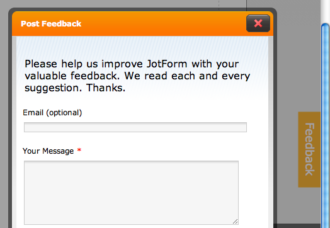Giving employee feedback is vital for the long-term success of every business. When organizations deliver employee feedback the right way, they provide constructive criticism that workers can use to grow. But if they carry out the process poorly, employee feedback can lead to a dramatic drop in employee engagement and performance.
That’s why it’s essential to understand what makes employee feedback effective. We’ve got 25 employee feedback examples below to get you started.
What employee feedback is all about
Employee feedback is any form of information exchange between an employer, manager, or leader and an employee. Its purpose isn’t to tell employees what they did wrong (although constructive criticism is part of any good feedback session); rather, it’s about helping employees improve their job performance.
Why employee feedback is important
Feedback can significantly improve employee engagement and productivity. Good feedback motivates employees and encourages them to do more of what they’re doing well.
Negative feedback can also have positive effects. With the right delivery, it can reduce the impact of poor performance and help employees understand how to improve.
Regular employee feedback can even help slow the Great Resignation, says Carrie Bender, director of people and culture at Strategic Security Solutions. “Encouraging frequent feedback from managers can help to maintain clarity, level the playing field and ensure employees know what is expected of them.”
What employee feedback looks like: A few examples
Employee feedback comes in multiple forms, from formal and informal to positive, constructive, and negative. We take a look at each of these below.
Formal employee feedback
Formal employee feedback is usually delivered in a conventional setting, like a one-on-one meeting with a manager.
An annual performance review is an example of a formal employee feedback session. Here, the manager can discuss positive and negative feedback with the employee, highlight what they achieved that year, and set goals for the coming year.
Here are other formal employee feedback examples:
- Scheduled meetings
- Regular one-on-one conversations
- Employee feedback surveys
- Exit interviews
Informal employee feedback
You don’t have to schedule employee feedback. Managers have plenty of opportunities to interact with employees each day and provide positive and constructive feedback.
A casual chat after a meeting can be a great time to go over the positives and negatives of the employee’s performance without that employee feeling like you’re grilling them.
Consider these additional opportunities for giving informal employee feedback:
- Casual interactions in the office
- Off-the-cuff comments in the moment
- Post-work socializing
- Peer-to-peer feedback
Positive employee feedback
Giving positive feedback is a way to recognize and reward good work. Praising an employee’s performance is one of the most common and effective forms of positive employee feedback.
Everyone likes it when someone congratulates them on a job well done, and this kind of feedback can send your employees’ engagement levels soaring. You can take it one step further: Instead of just congratulating them, make sure to point out exactly what they did well so they can replicate it in the future.
Here are other ways to provide positive employee feedback:
- Calling out actions you want to see become habits
- Praising an employee’s perseverance
- Praising a team effort
- Recognizing performance improvements
Constructive employee feedback
Not every task your employees perform will go well, but constructive criticism can help put them back on the right track.
If an employee didn’t do a great job on their last presentation, you could point out specific ways to improve rather than reprimanding them. The more specific your constructive feedback, the easier it is for employees to improve their performance.
Here are other things to focus on with constructive employee feedback:
- Rectifying communication issues
- Highlighting time management issues
- Pointing out skills they could improve
- Talking through mistakes
Negative employee feedback
Some issues require a more hardline feedback approach. While constructive feedback is meant to help employees improve, the purpose of negative feedback is to discourage specific behaviors.
A series of performance issues, like several late project deliveries, can be cause for negative employee feedback, for instance. Where one late delivery may be a cause for constructive criticism, several missed deadlines require a sterner approach.
Other reasons to deliver negative employee feedback include
- Reprimanding poor behavior
- Identifying negative attitudes
- Addressing a lack of engagement
- Resolving internal conflict
How to manage employee feedback with Jotform
Part of providing effective employee feedback is collecting assessments of employees from multiple managers and peers throughout your organization. Online forms are an excellent way to collect, store, and analyze that feedback.
Jotform makes it easy to start collecting feedback at no cost. There are dozens of employee performance evaluation templates to get you started, and you can customize any of them to fit your needs. You’ll receive a notification every time someone submits feedback, and every response will be automatically stored in a Jotform table.
Don’t forget that feedback is a two-way street. “Receiving feedback can be equally valuable for leaders, who can gain powerful insights from employees,” writes executive coach Jody Michael, author of Leading Lightly. So don’t be afraid to create an online form that generates feedback on your own performance too.











































































Send Comment: